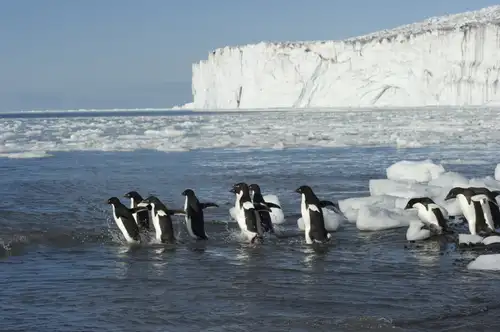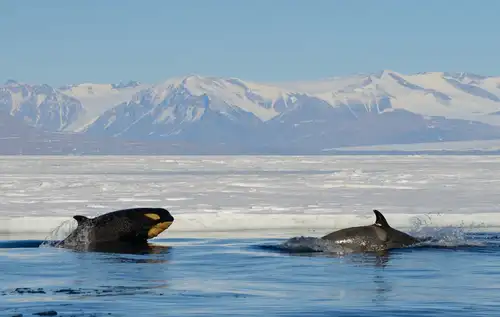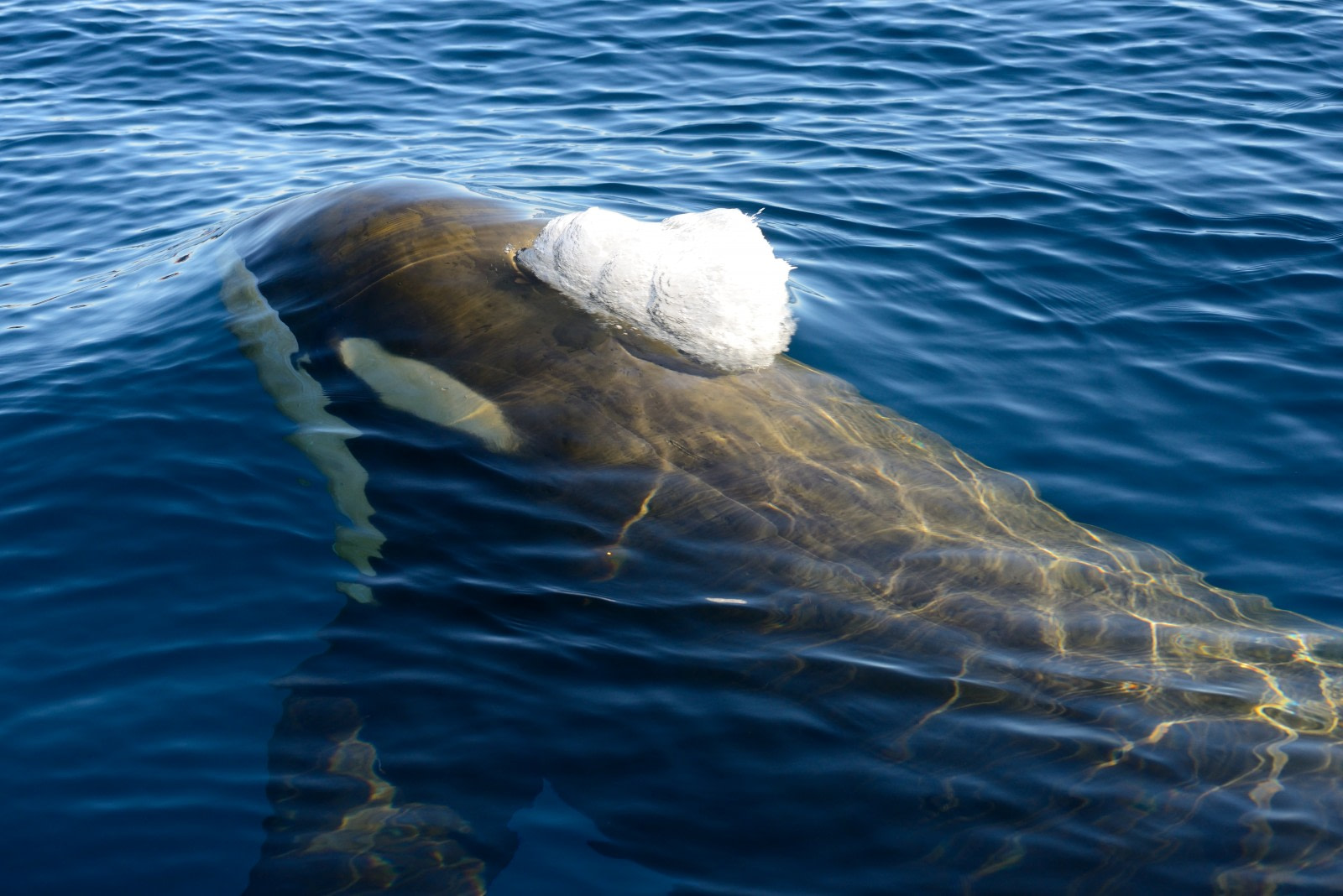Name: Killer Whale, Orca (Orcinus orca)
Length: 5.5-9.8 metres (18-32 feet)
Weight: 10,000 kg (10 tons)
Location: Worldwide
Conservation status: The Killer Whale's conservation status is listed as ""Data Deficient"" due to the existence of two or more distinct species. Some groups, like the ""southern resident"" group off the western coast of North America, are on the United States' Endangered Species List.
Diet: Varies by sub-group. Diets include fish, sharks, rays, seals, walruses, sea lions, otters, penguins, other sea birds, turtles, cuttlefish, octopi, squid, and other whales.
Appearance: Black with white spots around the eyes and a white belly. Orcas are apex predators and members of the dolphin family. They use sophisticated hunting techniques and are found worldwide, especially in colder waters near the North and South Poles. They are the most widely spread mammals after humans.
How do Killer Whales hunt?
Orcas have a diverse diet and specialized hunting patterns. They hunt in packs using teeth, similar to wolves. Some pods use sophisticated techniques, like tipping ice to drop prey into the water. They also herd prey to the surface or beach themselves to catch seals. Orcas around Norway and Greenland specialize in herring. Adult males can eat up to 100 kg of food daily.
Do they socialize?
Killer Whales are social mammals living in pods with complex social structures. Resident pods consist of matrilines, family groups centered around females, which can include four generations. Multiple pods form clans with distinct accents in their calls, and clans form communities with diverse dialects. Pods can vary in size, with resident pods having 5 to 50 members and transient pods usually having 7 or fewer members. Whales may fight for dominance within a pod.
How fast do Killer Whales move?
Orcas typically swim at 10-15 km per hour but can reach bursts of up to 45 km per hour.
What are Killer Whale mating rituals like?
Female Orcas become sexually mature around age 15 and can breed until about 40. Males leave their pods to avoid inbreeding. Gestation lasts 15 to 18 months, and mothers give birth to a single calf every five years. Calves are about 2.4 meters long and weigh around 180 kg. Rearing is a pod effort, with weaning starting at one year and taking another year to complete.
How long do Orcas live?
Female Orcas live an average of 50 to 80 years, with some living over 100 years. Male Orcas live an average of 30 years, with some living over 60 years.
How many Killer Whales are there today?
There are an estimated 50,000 Killer Whales in the wild. The United States' National Marine Fisheries Service estimates:
- Antarctic - 25,000
- Tropical Pacific - 8,500
- Northeast Pacific - 2,000-2,700
- Norway and Greenland - 500-1,500
Do Orcas have any predators?
Orcas are apex predators with no natural predators above them in the food chain.
Do Killer Whales attack people?
There are no known human deaths attributed to Killer Whales in the wild. They are generally curious and playful around humans. However, the captive male Orca at Seaworld, Tilikum, killed three trainers.
7 Quite Interesting Killer Whale Facts
- Killer Whales are a type of dolphin.
- Some Orcas stay with their mothers for life.
- Transient and resident pods do not interact.
- Calves learn their mother's calls even with different dialects nearby.
- Killer Whales have helped humans hunt other whales.
- The Siberian Yupik people believed Orcas became wolves in winter.
- Resident Killer Whales swim peacefully among marine animals that transient Orcas hunt.

The bio-richness of the Ross Sea

Orcas (aka Killer Whales) of Antarctica and the sub-Antarctic

Orcas of the Polar Seas






